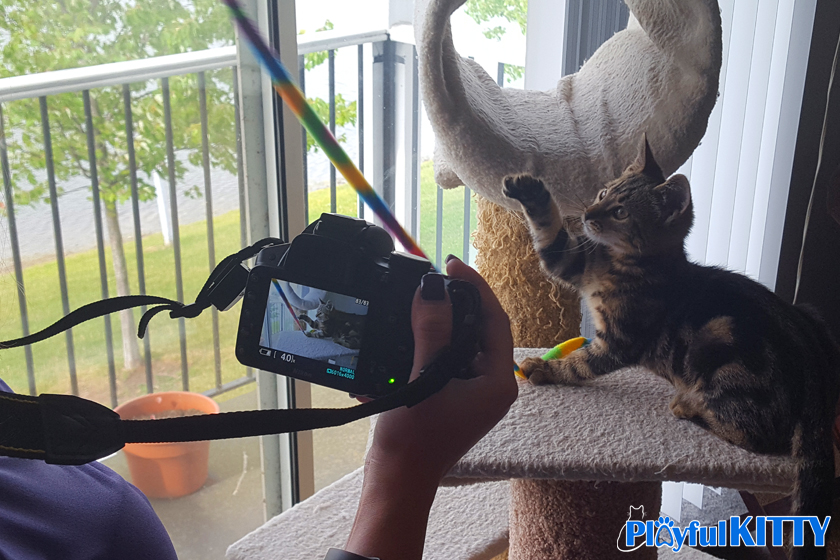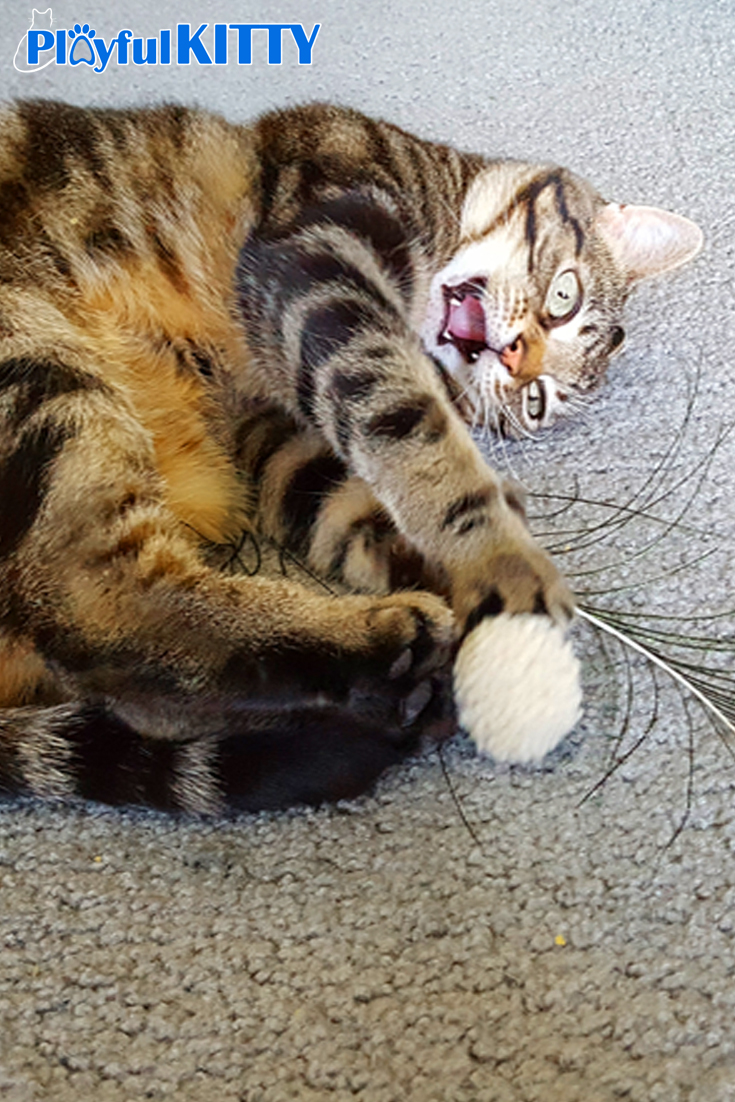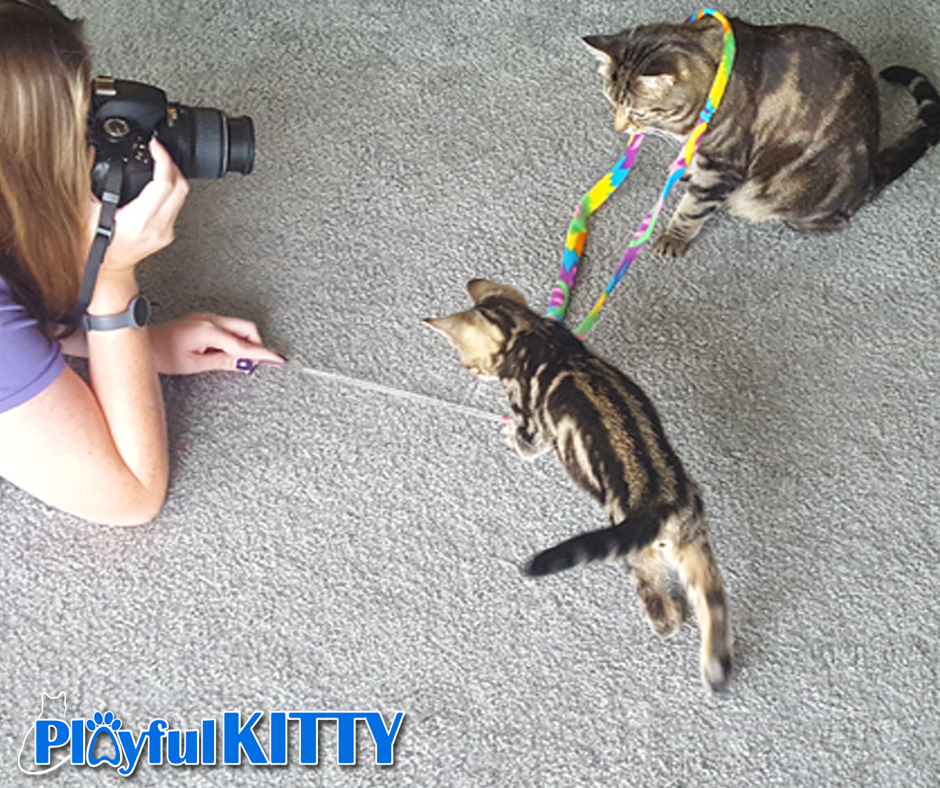How to Take Irresistible Cat Photos for Your Blog
Great cat photos are a hot commodity on the internet. Transforming your cat into the perfect spokesmodel for your sponsored posts is easier than you think. All it takes is a little time, training, and technique.
Train Your Cat to Love the Camera
Does your cat avoid your camera? One problem could be that your cat isn’t familiar with your camera. Cats are very territorial creatures and they can be quite temperamental about things around them that they haven’t personally investigated. Camera train your cat with these 4 simple steps:
1. Let your cat explore your camera. Cats learn about things through their senses, just like we do. Your cat may want to smell the camera or use their other senses to understand that it isn’t something harmful.
2. Help your cat to know what to expect from your camera. Taking lots of photos of your cat using the same camera can help your cat to get used to opening and closing of the iris in the lens (if your camera has one) and the sound of the shutter.
3. Make every experience with the camera a positive one. Keep the room as quiet, calm, and free of your cat’s stressors as you can when you take out your camera. Make sure that you are relaxed too – our cats read our emotions better than we think they do.
4. Figure out what motivates your cat. It could be treats, catnip, or a particular toy or game! Be generous with these motivators as you take photos.
Technical Tips
Light Up the Room
Great lighting is the secret to great photos. Natural, indirect sunlight is the best, but you can get great cat photos with indoor lighting too. Purchase some extra lamps (flood lamps, table lamps, etc.) and nice bright, white light bulbs. Place the lamps around the room you will be taking photos in. In most rooms, three or four lamps will work.
Avoid using your camera’s flash. If the room is too dark, add more lamps. The flash can hurt your cat’s eyes and be anxiety producing. Plus, it will create the feline version of red eye (crazy glowing green eyes) in your photos and it will take extra time to edit the finished photo.
Take Your Cat’s Perspective
Every photo of your cat should feel like you are having a conversation with your cat. It can be a workout, but move around as much as needed to keep up with your cat’s changing positions. Lay or sit on the
ground so that your camera’s lens is at your cat’s eye level. The more your audience sees your cat’s eyes, the more they will emotionally resonate with the images they are seeing.
Don’t Rush Purrfection
Give yourself plenty of time for your photo shoot with your cat. Take lots and lots of photos. No one’s camera roll is perfect. You will undoubtedly find a few diamonds in the rough among those that are blurry, silly, or framed wrong.
The Do’s of Product Placement
When you are taking photos of your cat for a sponsored post, the product must be the centerpiece of everything. Make sure that the product’s branding is visible, facing the camera, and clear. Logos are very important in photos on sponsored posts.
One of the main purposes of photos in sponsored content is to answer your reader’s questions about the product. Think about what details are important to you when you are considering purchasing a new product:
- What function does the product serve? Why do I (or my cat) need this product?
- What materials is the product made from? Show the details, if possible.
- How will my cat use the product?
- Is this product effective? Is it a high-quality product?
Try to answer these questions with the photos you take of your cat with the product. Show your cat using the product, if that is appropriate. Give your audience a feel for whether or not your cat likes the product. Don’t be afraid to use humor! Funny photos are sometimes the most memorable.
Getting Purrfect Cat Photos
Not all products will have your cats jumping for joy. Your cat will probably look at a bag of cat litter, give you their “why do I care” face and walk away. Use your cat’s motivators to interest them in being photographed. Here are a few ideas:
- Use catnip spray generously. Spray the set of your photo shoot or the packaging of your product with catnip spray. It is colorless, so it shouldn’t discolor anything.
- Play, play, play! A clear plastic straw can go a long way. Tease your cat with a toy appearing behind the product or in the backdrop. Any game will work as long as it keeps your cat’s attention.
- Motivate with a treat. Treats are great rewards. When your cat sits where you want them to sit, give them a treat. Hold the treat up near the lens of the camera so the cat isn’t looking down when you take the photo.
- Make photoshoots an exciting, discovery-filled experience! Let your cat see the product for the first time during your photo shoot. It may help to reenact tearing open the box and pulling the product out. Act as excited about the product as you want your cat to be about it – they are paying attention to you.
Cats are not big fans of taking direction. Sometimes you need to be flexible and let your cat dictate the rules to you. It may be best to do your photo shoots at whatever time of day your cat is naturally most active. Conversely, your cat may be easier to work with when they are a little bit sleepy. Sometimes placing the product with them when they are relaxing is the best way to go. Work with your cat to find out what situations work best for them and they will reward you with great cat photos.
Robin Mudge is a creative kitty mommy and the blogger behind www.PlayfulKitty.net. Outside of cats and blogging, Robin has a passion for education, acting, and singing.
All photos courtesy of the author.






